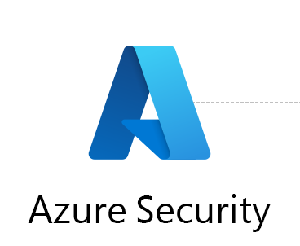Microsoft Cybersecurity Reference Architectures (MCRA) are comprehensive and scalable frameworks designed to guide organizations in building robust and effective cybersecurity solutions using Microsoft technologies. These reference architectures provide a blueprint for implementing a strong cybersecurity posture and addressing various security challenges in today’s complex digital landscape. They encompass a range of security domains, including identity and access management, threat protection, information protection, and security management.
MCRA offers a structured approach to designing and deploying security controls, leveraging Microsoft products and services. It aligns with industry best practices and incorporates Microsoft’s deep knowledge and expertise in cybersecurity. By following MCRA, organizations can enhance their security capabilities, reduce risk, and protect their critical assets and data.
Let’s explore some examples of Microsoft Cybersecurity Reference Architectures and their usage:
- Zero Trust Reference Architecture: The Zero Trust architecture focuses on securing resources based on user context and the trustworthiness of devices and networks, rather than solely relying on traditional network perimeters. It emphasizes the principle of “never trust, always verify.” This reference architecture includes components like Azure Active Directory (Azure AD), Azure Information Protection, Azure Firewall, Azure Bastion, and Azure Conditional Access. It enables organizations to enforce strict identity verification, implement multi-factor authentication, control access to resources, and detect and respond to threats effectively.
- Secure Cloud Foundation Reference Architecture: This reference architecture provides guidance on securing cloud workloads and infrastructure in Microsoft Azure. It covers areas such as identity and access management, network security, data protection, and monitoring. It incorporates Azure AD, Azure Security Center, Azure Firewall, Azure Virtual Network, Azure Key Vault, and other Azure services. By implementing this architecture, organizations can establish a robust security foundation for their cloud environments, ensuring data confidentiality, integrity, and availability.
- Threat Protection Reference Architecture: The Threat Protection architecture focuses on defending against advanced cyber threats by integrating various security technologies and practices. It includes components like Azure Sentinel, Azure Advanced Threat Protection, Microsoft Defender for Endpoint, and Microsoft Cloud App Security. This architecture enables organizations to detect, investigate, and respond to security incidents proactively, leveraging threat intelligence, analytics, and automation.
- Data Protection and Compliance Reference Architecture: This reference architecture provides guidance on protecting sensitive data and achieving compliance with regulations such as GDPR (General Data Protection Regulation) or CCPA (California Consumer Privacy Act). It incorporates technologies like Azure Information Protection, Azure Key Vault, Azure Purview, and Microsoft 365 Compliance Center. By implementing this architecture, organizations can classify and label data, encrypt and manage encryption keys, establish data governance policies, and meet regulatory requirements effectively.
The usage of MCRA involves the following steps:
- Assessing security requirements: Understand your organization’s security objectives, regulatory obligations, and risk tolerance to determine which MCRA suits your needs.
- Architectural design: Utilize the relevant MCRA as a blueprint to design a comprehensive security architecture that aligns with your organization’s requirements.
- Implementing security controls: Deploy the recommended Microsoft products and services based on the reference architecture, following Microsoft’s best practices and guidelines.
- Configuration and customization: Fine-tune the security controls to fit your organization’s specific needs and integrate them with existing systems and workflows.
- Monitoring and maintenance: Continuously monitor the security infrastructure, apply updates and patches, and stay up to date with emerging threats and vulnerabilities.
- Periodic review and optimization: Regularly review and refine your security architecture to adapt to evolving security risks and changes in your organization’s IT landscape.
By leveraging Microsoft Cybersecurity Reference Architectures, organizations can benefit from proven methodologies and established security patterns, enabling them to build robust, scalable, and compliant cybersecurity solutions.
